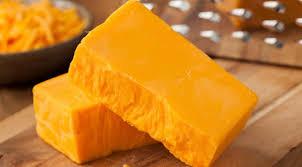U.S. Cheese Market Competitive Landscape and Strategies

Introduction
From the rolling dairy farms of Wisconsin to the arid plains of California, geography plays a major role in defining the flavor, supply, and demand of cheese across the U.S. Regional specialties, climate, local farming practices, and consumer habits all contribute to a patchwork of distinct cheese ecosystems.
Regional Insights and Market Scope
Recent studies of the U.S. Cheese Market report reveal that local climatic conditions, cultural preferences, and infrastructure all heavily influence production capacities and consumption trends.. For example, states with abundant dairy herds and feed supply (like Wisconsin, California, Idaho) have historically dominated production. But consumption patterns can differ widely: coastal urban areas may demand gourmet, specialty, or imported cheeses, whereas rural or interior regions may favor commodity cheddar, American-style slices, or processed cheese.
Production Hubs and Their Strengths
Wisconsin, known as “America’s Dairyland,” is famous for high volumes of traditional cheeses and is particularly strong in Cheddar, Colby, and other American-style cheeses. California, beyond its large milk output, supports innovation in plant-based variants and even goat’s milk cheeses in some regions. Oregon, Vermont, and parts of the Northeast boast many small artisanal cheesemakers, often using raw milk or heritage breeds and focusing on unique flavor profiles shaped by local terroir.
Consumer Preferences by Region
Consumption isn’t uniform. In the South and Midwest, comfort cheese types — mozzarella (used in pizza), processed cheese for burgers, slices — remain widely popular. In metropolitan areas—New York, San Francisco, Seattle—there’s more appetite for speciality, imported, artisanal, and younger-aged cheeses or those with strong flavor infusions. Ethnic diversity also shapes preferences: Hispanic communities may favor quesillo, queso fresco; Asian populations may include paneer or tofu- and soy-based alternatives in their diet.
Logistics, Costs, and Infrastructure
Transporting cheese across long distances requires cold chain infrastructure. Regions that are far from processing centers or far from consumer markets may incur higher freight and refrigeration costs, which impacts pricing and freshness. Regulations around raw milk, aging facilities, and state food safety laws can also vary; some states have more permissive regulations for small-scale or raw milk cheese aging, others more strict—affecting where artisanal producers can operate.
Opportunities in Regional Branding
One area of growth is the branding of region-specific cheeses. Terroir, heritage, and naming can create identity and value—cheeses identified with a region (e.g., Vermont cheddar, Napa goat, Oregon blue) often command premium pricing. Consumers interested in story and provenance are more likely to try these. Local farmers’ markets, boutique shops, food tourism all help these brands grow.
Conclusion
Regional factors — from climate and dairy production to consumer taste and regulation — all play powerful roles in shaping the U.S. cheese market. Producers who harness regional strengths, maintain authenticity, understand local preferences, and manage logistic costs can thrive. As consumers increasingly value locality and story, regional differentiation may be among the strongest competitive tools moving forward.
- Music
- Travel
- Technology
- AI
- Business
- Wellness
- Theater
- Sports
- Shopping
- Religion
- Party
- Other
- Networking
- Art
- Literature
- Home
- Health
- Gardening
- Games
- Food
- Fitness
- Film
- Drinks
- Dance
- Crafts
- Causes
